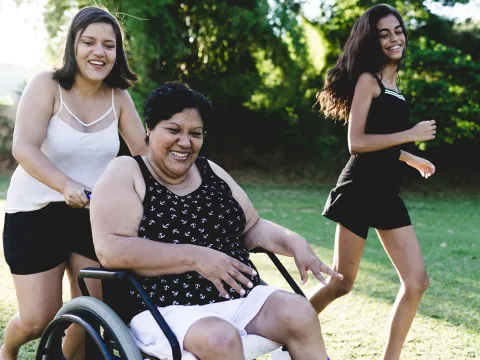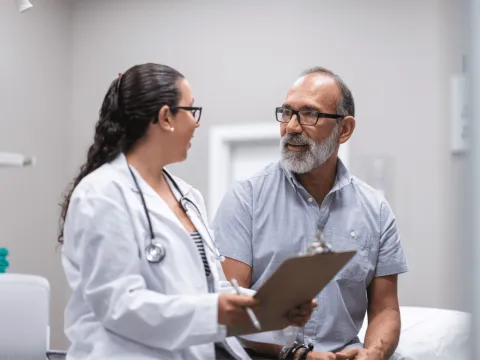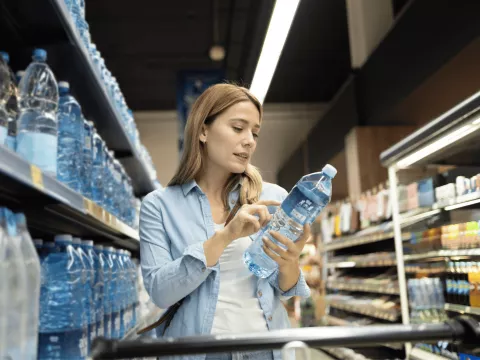- UChicago Medicine AdventHealth

Choose the health content that’s right for you, and get it delivered right in your inbox.
Summer is a time to enjoy outdoor activities with friends and family — beach trips, picnics, camping weekends and parties fill our calendars. And while spending time outdoors can be a lot of fun, the warm summer months may cause health problems for some of our loved ones.
High temperatures and long-term sun exposure can worsen side effects for some chronic conditions, and they can also cause problems like heat exhaustion, heat rash or heat stroke. During the summer months, it’s important to check in regularly with any of your friends or family who may have a medical condition, and to understand the signs and symptoms of a heat-related illness.
Chronic Illnesses and Heat
Heat and sun exposure can aggravate symptoms of certain conditions, including:
- Autoimmune diseases, like Lupus and rheumatoid arthritis
- Migraines
- Multiple sclerosis
- Rosacea
In some cases, a chronic disease may increase someone’s risk for a heat-related illness because the body isn’t able to cool itself down easily. People may be more at risk for heat-related illness if they have conditions like:
- Heart disease
- High blood pressure
- Obesity
- Poor circulation
Young children, people over the age of 65 and people who exercise during hot weather are also at high risk for heat-related illness, so it’s important to check on them regularly to ensure they’re staying safe and healthy.
Tips for Staying Safe During Hot Weather
If you or a loved one suffer from a chronic medical condition, follow these tips to avoid symptom flare-ups and heat-related illnesses:
Ask About Your Medicines
Certain medicines can worsen the effects of heat, especially medicines used to treat depression, insomnia or poor circulation. Talk to your doctor about the medicines you’re taking and whether they may increase your risk for heat-related illnesses.
Avoid Mid-Day Activities
Try to stay inside or in a cool place during the hottest part of the day, typically between 11 am – 3 pm, and limit activity to cooler parts of the day.
Avoid Strenuous Activities
Take it slow during hot weather and avoid vigorous exercise. Make sure you also get plenty of rest.
Check in Regularly
Touch base with your friends and neighbors to make sure they are doing okay in the heat, and don’t be afraid to ask someone to do the same for you. Try to check in at least twice a day for adults who are most at risk for heat-related illnesses.
Replenish Salt and Minerals
When you sweat, your body loses important salt and minerals, which can increase your risk for heat exhaustion. Ask your doctor about the safest way for you to replenish.
Stay Hydrated
Drink plenty of fluids, even if you’re not thirsty. Avoid drinking sugary or alcoholic beverages, as these drinks can cause your body to actually lose fluids.
Stay in an Air-Conditioned Space
If your home doesn’t have air conditioning, try spending a few hours at the library or mall to cool down your body temperature. Use ceiling fans or portable fans to circulate air. When you shower, keep the water cool.
Stay Informed
Check your local news for high heat warnings and stay up-to-date on cooling shelters available in your city or town.
Use Sunscreen
If you’re spending time in the sun, make sure to apply broad-spectrum sunscreen regularly. Sunburns can make it difficult for our bodies to cool down, which can increase our risk for heat exhaustion or heat stroke.
Wear the Right Clothes
Wearing a wide-brimmed hat, sunglasses and lightweight long-sleeved shirts can also help prevent sunburns. Stick to loose-fitting, moisture-wicking and light-colored clothing.
Know the Signs of Heat-Related Illnesses
It’s important to know the signs of heat-related illnesses and what to do when you see someone with these symptoms. In some cases, it may save a life.
Heat Exhaustion
Heat exhaustion happens when your body loses too much water and salt. Symptoms of heat exhaustion can include:
- Cold, pale or clammy skin
- Dizziness or fainting
- Fast, weak pulse
- Fatigue
- Headaches
- Heavy sweating
- Muscle cramps
- Nausea or vomiting
If you believe you are suffering from heat exhaustion, make sure you:
- Drink water slowly
- Loosen your clothing
- Move to a cool place
- Place cool towels on your skin or take a cold shower or bath
If your symptoms get worse or don’t go away after an hour, seek medical help.
Heat Stroke
Heat stroke is a medical emergency. If you suspect someone is having a heat stroke, call 911 right away. Symptoms of heat stroke may include:
- Body temperature of 103°F or higher
- Confusion
- Dizziness
- Fainting
- Fast, strong pulse
- Headache
- Hot, red and dry skin
- Nausea
After calling 911, make sure the heat stroke victim:
- Doesn’t drink anything
- Moves to a cool place
- Has cool, wet towels placed on their skin
Sunburn
Sunburns are common in the summertime and can result in painful, red and warm skin. Sometimes, sunburns can also cause blisters. If you or a loved one get a sunburn, be sure to:
- Avoid breaking blisters
- Moisturize the sunburned skin with lotion
- Place cool cloths on the sunburn or take a cool bath
- Stay out of the sun until the burn heals
Heat Rash
Heat rash is a group of small blisters on the skin. They usually form in the groin, neck, chest or the inside of the elbow. If you or a loved one get a heat rash, be sure to:
- Keep the rash dry
- Stay in a cool, dry place
- Use baby powder or other cooling powder to ease pain from the rash
Stay Safe and Cool
Whether you’re spending time outdoors with your family or caring for a loved one with a chronic condition, it’s important to keep cool, stay hydrated and know the warning signs of heat-related illnesses. Be sure to talk with your doctor about other ways you and your family can stay safe during the warm summer months.


